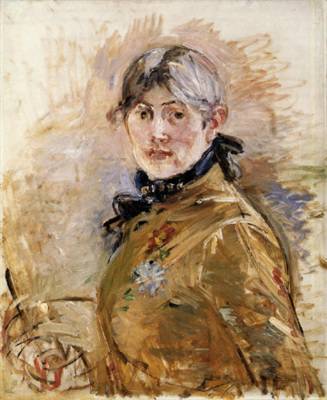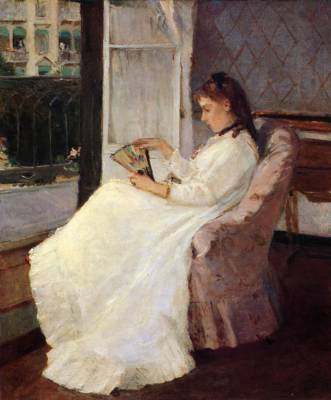
ART/DC
"Berthe Morisot: An Impressionist and Her Circle"
Jan. 15, 2005 – May 8, 2005
Impressionism is arguably the world's most popular art movement. "Berthe Morisot: An Impressionist and Her Circle" establishes the artist as a central figure of the movement, showing her paintings, prints, watercolors, and drawings alongside those of her more recognized male colleagues: Edouard Manet, Edgar Degas, Pierre-Auguste Renoir, and Claude Monet.
More than 75 works will be on display in the U.S. for the first time; they were bequeathed to the Musée Marmottan-Monet in Paris in 1997.
Berthe Morisot succeeded as a professional artist, despite society’s expectations for women from respectable upper-middle-class families, to acquire artistic training merely as a genteel hobby.
Born June 14, 1841, in Bourges, France, Berthe Morisot was the third daughter of a prominent and wealthy government official. Raised accordingly, Morisot and her sisters were provided with tutors for languages and literature and, in 1857, art lessons.
Morisot and her older sister Edma quickly developed both a passion and a high level of skill in drawing and painting.
Alongside her sister, Morisot copied masterpieces at the Louvre and painted out of doors under the direction of well-known landscape painter Camille Corot.
She first exhibited her paintings at the prestigious annual Salon in 1864, and her work was shown there regularly through 1873.
In the winter of 1868–1869, Morisot was introduced to Edouard Manet.
Manet’s reputation and aesthetic innovations were well known to Morisot, and they began a lifelong friendship. Over the course of the next five years, Manet would paint Morisot 11 times.
While Morisot learned much from Manet, she never formally studied with him. She often disagreed with his suggestions, most notably in her decision to join the Impressionist circle.

Shown above: "The Artist's Sister at a Window," (1889)
Oil on canvas
National Gallery of Art, Washington D.C.
Berthe Morisot
In 1874, Edgar Degas asked Morisot to join a group of independent artists that included Degas, as well as Monet, Renoir and Camille Pissarro. They later became known as the Impressionists.
Degas and his colleagues declared that Morisot’s pictorial technique, with her loose brushstrokes, unfinished backgrounds, and light-infused color exemplified the Impressionists’ aesthetic aims.
Morisot remained faithful to the Impressionists after others abandoned the movement, participating in seven of the eight exhibitions and single-handedly organizing the final show in 1886.
Perhaps Manet’s greatest influence on her was the introduction of his brother Eugène to her family; Morisot wed Eugène Manet in December 1874 at the age of 33, well after she was established as a professional artist, and several months after her participation in the first Impressionist exhibition.
Eugène readily supported his wife’s career, never asking her to abandon her painting; despite his acceptance of her art, however, Eugène in particular and men in general appear extremely infrequently in Morisot’s paintings.
Her wide range of subjects often included portraits of her mother, sisters, and nieces, as well as of her own daughter Julie, to whom she gave birth in 1878, and who would become her favorite model and painting companion.
Morisot continued to paint and exhibit in her later years, receiving her first solo exhibition only a few weeks after her husband’s death in 1892.
Morisot died of pneumonia in 1895, leaving the majority of her works and collection to her daughter Julie, who served as Morisot’s champion by lending her works to international exhibitions until her own death in 1966.
Shown/header image:
Self Portrait, (1885)
Oil on canvas
Musée Marmottan-Monet
Berthe Morisot
Find it: NMWA/National Museum of Women in the Arts
1250 New York Avenue, N.W.
Washington, DC 20005-3970
Get info: 1-202-783-5000, 1-800-222-7270
Find out about art exhibits in other cities, in the DEC/JAN issue of "Arte Six."
Related booklist: "Berthe Morisot" (Anne Higonnet), "Berthe Morisot: The First Lady of Impressionism", "Impressionist Quartet", "Edouard Manet: Rebel in a Frock Coat", "Berthe Morisot, the Correspondence With Her Family and Friends", "Berthe Morisot : Le Secret de la femme en noir/Berthe Morisot: The Secret of the Woman in Black" (FR), "Berthe Morisot: Impressionist", "The Women Impressionists: A Sourcebook"

<< Home